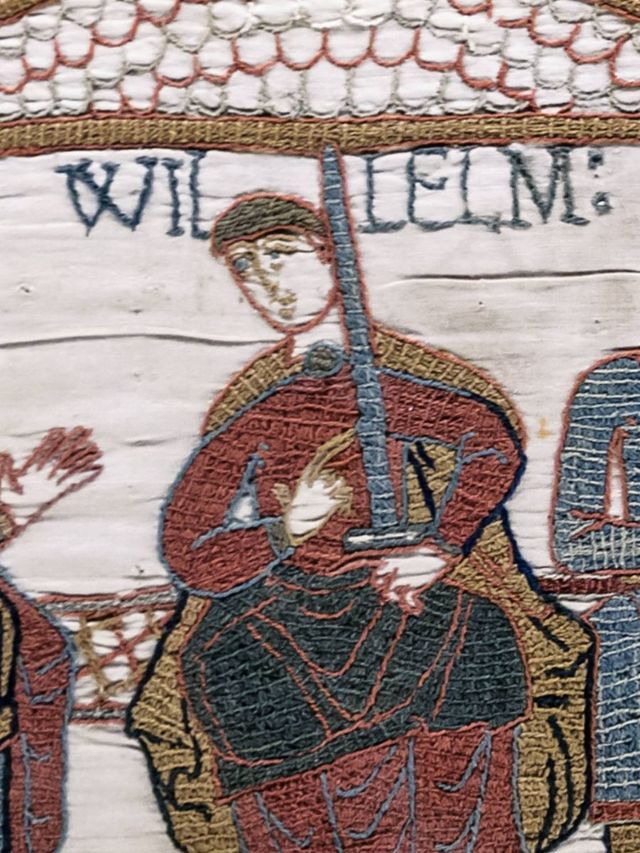 Bayeux tapestry, the comet | ©Myrabella / CC-BY-SA
Bayeux tapestry, the comet | ©Myrabella / CC-BY-SAReady to go!
1066. William the Conqueror gathered his men and his fleet in Saint-Valéry. For battle of Hastings and conquest of England by Normans!
We read in the book Histoire de cinq villes et de trois cents villages, hameaux ou fermes (Dumoulin, 1863) that 1000 boats were waiting in Saint-Valéry harbour. On board, 50 000 men coming from several French provinces, Flanders of Brittany.
At first, William and his men should have left from Dives-sur-Mer. But the foul weather stopped them from weighing anchor.
Winds weren’t favourable at all! They waited one month, then they left the harbour.
Stroke of bad luck
But a new storm stopped them in Saint-Valéry. And during the short travel between the two harbours, several boats wrecked and their crew drowned.
Soldiers, already worked up with the accumulated late, took it badly. This disaster just disheartened them a bit more...
And from the initial euphoric energy, only left tears. Some went on the beach to search for their companions’ bodies. Others deserted the place on the quiet, at night. So, William buried corpses and gave a bigger ration of food.
But above all, he brought saint Valéry’s relics in front of his huge army, quiet under the grey sky. They prayed...
The next morning, on October 6th 1066, the wind calmed down. Soldiers regained some strength. William’s conquering fleet could go in England!
The comet
Oh, but deep down his heart, William knew he would win, in England. Especially as during the night, the Halley’s comet crossed the sky, a "hairy star, a good omen announcing great events". At that time, we could see the famous comet visible 15 days in the sky: they even represented it in the famous Bayeux tapestry!
The comet’s tails was turned towards the north-west side, towards England: astrologers said it meant something would shake the country... like a revolution. And the comet had two trails: it meant two powers were going to be reunited!

